The Intel Lakefield Deep Dive: Everything To Know About the First x86 Hybrid CPU
by Dr. Ian Cutress on July 2, 2020 9:00 AM ESTLakefield CPUs and Devices Coming To Market
With Intel teasing Lakefield from late 2018 and stating 2020 availability, naturally we had been expecting an announcement at some point this year, and in early June the company officially announced the two processors that would be coming to the Lakefield family. Technically this is four SKUs, which I’ll get on to.
Both the parts feature ‘Core i5/i3’ branding, however they will not fall into a traditional Core generation naming. So where Skylake was 6th Gen Core, Comet Lake was 10th Gen Core, these are just ‘Intel Core Processors with Intel Hybrid Technology’. Rolls off the tongue, doesn’t it.
Both CPUs are the same silicon underneath, just with different core frequencies and GPU configurations with the Core i3 having it partly disabled.
| Intel Lakefield Processors | ||||||||
| AnandTech | Cores | Base Freq |
1C Turbo |
nT Turbo |
Gen11 IGP |
IGP Freq |
DRAM LP4 |
TDP |
| i5-L16G7 | 1+4 | 1400 | 3000 | 1800 | 64 EUs | 500 | 4267 | 7 W |
| i3-L13G4 | 1+4 | 800 | 2800 | 1300 | 48 EUs | 500 | 4267 | 7 W |
Intel confirmed that the base frequency and all-core turbo values are unified frequencies across all the cores, while the single core turbo applies to the Sunny Cove core. Support for LPDDR4X-4267 is given for both processors, and is a frequency notch above the support found in Ice Lake. The graphics is wide and slow, running at only 500 MHz, and both CPUs have a TDP of 7W. The amount of PoP memory does not affect the TDP.
However, it’s the PoP memory that will provide each one of these processors with two variants. The memory for Lakefield is being provided by a third party (Intel won’t say who, so I guess we’ll find out when we put the CPU in acid), and assembly is done by Intel. Intel will offer both processors in 4 GB and 8 GB configurations, running at a maximum memory bandwidth of 34 GB/s, indicative of dual 16-bit memory controllers. So despite the frequency of the memory being higher than Ice Lake, Ice Lake can address 4x16-bit memory controllers, giving an overall higher memory bandwidth.
Intel will debut these two SKUs in its first generation of Lakefield. Even those these CPUs are a 1+4 configuration, operating mainly in a 0+4 as mentioned on the previous pages, Intel is placing them in the premium market spaces due to the increased complexity of construction but also on the basis of the low idle power. Intel claims a 2-3 mW idle power (initially said 2 mW, then said 3 mW, then settled on 2.6 mW, depending on who you ask) while in connected standby modes. This will help any systems using them achieve long periods of sleep modes without needing to worry about casual drain.
As a result, these CPUs will find homes in premium, always-connected laptops, such as the Samsung Galaxy Book S expected in markets this month, the Lenovo ThinkPad X1 Fold, coming later this year, and in the Microsoft Surface Book Neo.
Samsung Galaxy Book S
As per our announcement piece:
First teased by Samsung late last year, the Lakefield-based version of the laptop is set to join their existing Qualcomm 8cx-based model, swapping out the Arm SoC for x86, providing a very interesting point of competition if we’re able to compare the two in the same chassis. The Intel Galaxy Book S will be the first device to ship with Lakefield, putting the new processor to the test in seeing if Intel can match the kind of all-day battery life that the existing Galaxy Book S is known for.
Taking a look at the specifications, the Intel-based version of the Galaxy Book S is a spitting image of the Qualcomm version. Samsung appears to be using the same chassis here, so the 13.3-inch laptop retains the same dimensions as the current model, as well as the same two USB-C ports. The battery capacities are identical as well at 42 Wh, and I expect that the Intel model is also using the same 1080p LCD. Curiously though, the Intel model does end up being ever so lighter than the Qualcomm model – Samsung puts the former at 950g, 10g lighter than the 960g Qualcomm model.
| Samsung Galaxy Book S Family | ||
| Galaxy Book S (Intel) | Galaxy Book S (Qualcomm) | |
| CPU | Intel Core with Hybrid Technology 1x Sunny Cove (Core) 4x Tremont (Atom) |
Qualcomm Snapdragon 8cx 4x Kryo 495 Gold @ 2.84 GHz 4x Kryo 495 Silver @ 1.8 GHz |
| GPU | Intel UHD Graphics | Adreno 680 |
| Display | 13.3 Inch, 1920×1080 Full HD Touchscreen |
|
| Memory | 8 GB LPDDR4X | |
| Storage | 256/512 GB eUFS + microSD Card Slot |
256/512 GB + microSD Card Slot |
| Networking | Wi-Fi 6 (802.11ax) BT 5.0 |
Wi-Fi 5 (802.11ac) BT 5.0 |
| Modem | Discrete LTE Cat 16 |
Integrated Qualcomm X20 LTE Cat 18 |
| Battery | 42 Wh | |
| Ports | 2 x USB-C 1 x 3.5 mm (phono/mic) |
|
| Dimensions | 305.2 x 203.2 x 11.8 mm | |
| Weight (Approx) | 950g | 960g |
| Price (USD) | N/A | Starts at $999 |
As for memory and storage, because the memory is part of the Lakefield package, Samsung is only offering a single 8GB configuration here. Unfortunately Samsung’s spec sheet doesn’t list memory frequencies, so we’ll have to wait and see what Intel has Lakefield’s memory clocked at. Meanwhile Samsung provides the storage, using 256GB or 512GB of their eUFS flash memory. To my knowledge this is the first x86 laptop to ship with eUFS, reflecting the mobile roots of the devices Intel is targeting with Lakefield. Further storage expansion is then available through a microSD card slot.
One specification that’s notably missing from Samsung’s announcement is the expected battery life of the Intel-based model, and this is perhaps going to be the most interesting aspect of Lakefield. Intel has worked very hard to get their idle power consumption down to be able to match what Qualcomm has achieved with the 8cx, with the company claiming that Lakefield draws just ~2-3mW at idle. At the same time, however, Lakefield lacks an integrated modem, and as a result Samsung is relying on an Intel Cat 16 external modem here. So in the battle of the Galaxy Books, Qualcomm will have the advantage in regards to requiring fewer chips.
As for other wireless connectivity, the new Intel model will ship with a 2x2 Wi-Fi 6 radio, giving it an edge there over the Qualcomm model with Wi-Fi 5. And both models ship with Bluetooth 5.0 support.
Rounding out the package, the Intel-based Galaxy Book S has a 720p webcam, a built-in microphone as well as Dolby Atmos-badged stereo speakers co-designed with AKG. The laptop also has a Windows Hello-compatible fingerprint reader. Price is currently unknown.
Lenovo ThinkPad X1 Fold
From our news announcement coverage:
The new Fold is a true high-end Thinkpad, with a flexible 13.3-inch OLED display split across the two halves of the design, essentially becoming the size of a notepad when folded. This means that when unfolded, it offers 2x more screen real estate than a Samsung foldable smartphone. The construction of the foldable display includes metal frames and supports combined with carbon fiber plates. The hinge mechanism claims to provide friction free folding, but also allows for rigid support at a variety of angles when unfolded like a standard clamshell.
When folded, the device is just over an inch thick (27.8 mm) at its widest point, but when unfolded becomes only 7.8 mm thick, or 11.5 mm with the included cover. The reason that the folded dimension is more than 2x the unfolded is because there will be a slight ridge on the hinge where the fold is, so the display isn’t crisply folded.
Inside the unit beats the heart of a properly built laptop. We’ve got one of the first new outings for Intel’s Lakefield processor, featuring 1 big Sunny Cove core and 4 smaller Tremont Atom cores, combined with Intel’s Gen11 HD Graphics (the ones that come with Ice Lake, although it doesn’t mention frequencies or EUs). Memory is a full 8 GB of LPDDR4X-2133 with storage provided by a standard M.2 2242 NVMe drive, although Lenovo will offer variants up to 1 TB. There’s an inbuilt 5 MP camera, and the battery is a proper 50 Wh, good for 11+ hours according to Lenovo.
The exact specifications on the display is a 13.3-inch flexible OLED with a 2048x1536 resolution, with brightness up to 300 nits and color gamut support up to 95% of DCI-P3. Touch is also implemented.
For IO, the device has two USB Type-C ports (one USB 3.1, one USB 3.2), and a Displayport over Type-C port for external displays. There is also a SIM slot in order to use the onboard modem. Lenovo lists the modem as 4G/5G, although doesn’t state which modem this is – it’s likely to be Qualcomm’s X55 at this point. The device also supports 802.11ax and BT5.0.
The price according to Lenovo is $2499 for the 1 TB model. All units will come with an Active Pen and an external keyboard in the box, and altogether the unit weighs 999g / 2.2 lbs (cover included). The keyboard can be off the notebook, or placed on one half of the screen:
The Lenovo ThinkPad X1 Fold looks like a crazy device that I’d love to test. Lenovo has a tentative date of ‘Mid 2020’ for the product, which will likely depend on display availability as well as Intel’s production of Lakefield processors.
Microsoft Surface Book Neo
Less is known about the Surface Book Neo. It was presented by Microsoft at an event in October 2019, featuring dual 9-inch screens and a fully rotatable hinge, and according to Microsoft’s website should be available by the end of the Holiday 2020 season.
The Neo is a true dual screen device, rather than something foldable, but will still use the external keyboard. We expect some form of pen support, and it should be running Windows 10X, a special build of Windows built for multi-screen devices like this one. However, it has been reported that Windows 10X has been delayed until next year due to the additional complexities of working from home during the pandemic as well as a focus more on single screen devices.


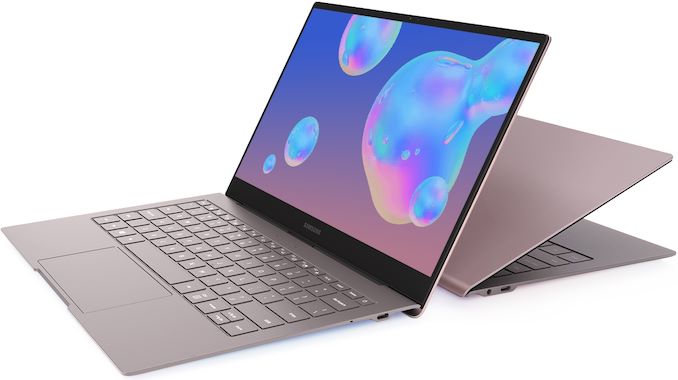
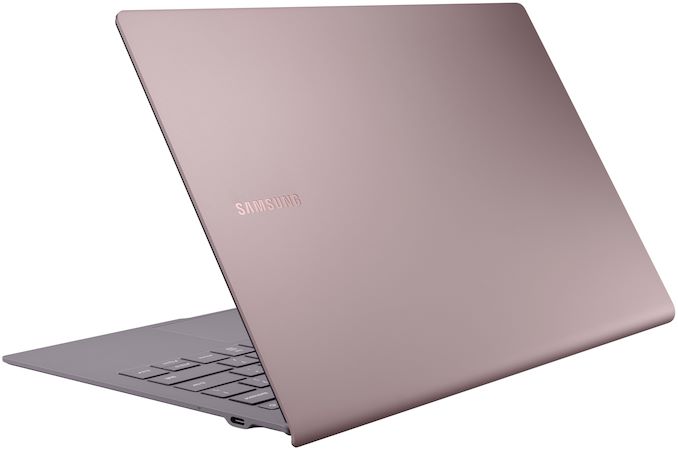
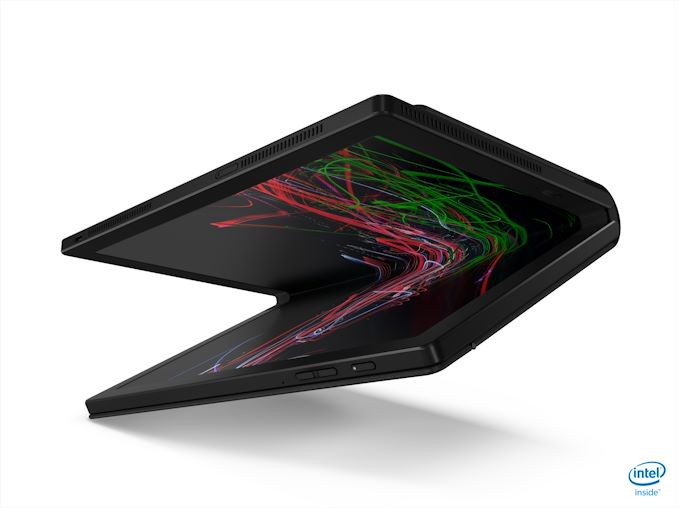
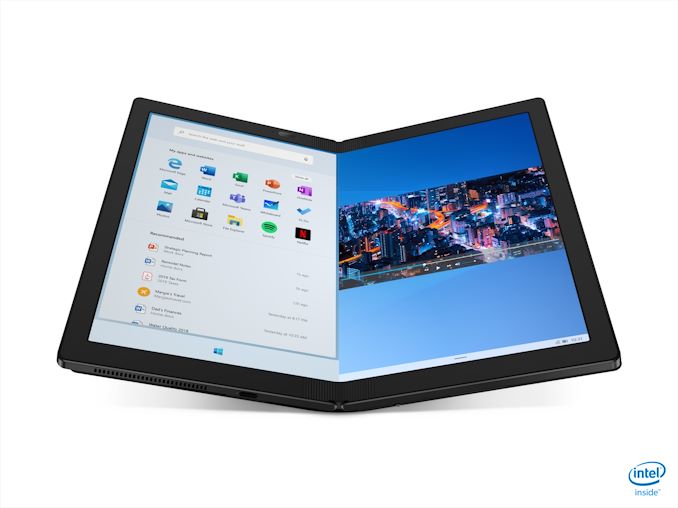
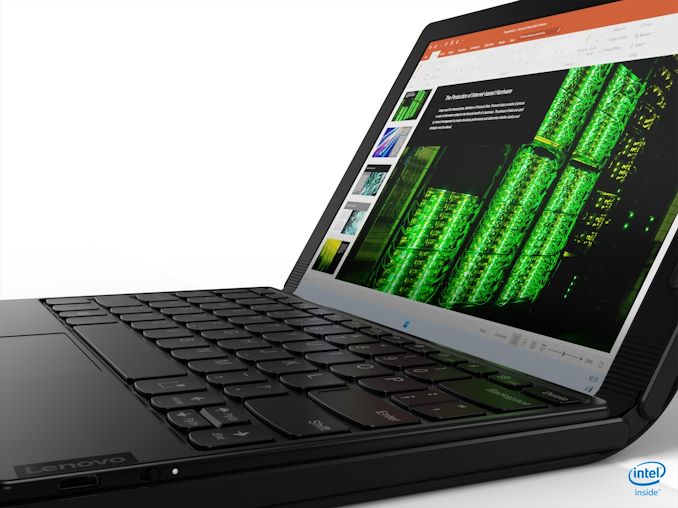
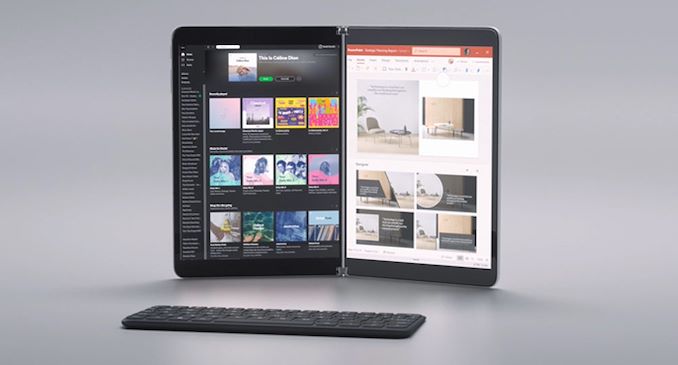








221 Comments
View All Comments
Alistair - Thursday, July 2, 2020 - link
The only point of this is if it is dirt cheap. You don't pay a premium for 1 core and 4 atom cores. DOA. I'll take a 7nm 4 core Zen 2 laptop instead thanks.Make this a $50 CPU? Then I'm interested.
lmcd - Thursday, July 2, 2020 - link
I don't think it'll be $50 but if it is, I hope to see it on single-board computers. That'd be slick.serendip - Thursday, July 2, 2020 - link
It's meant for $1000 computers, not cheap sub-$500 devices. I wouldn't pay that much money for 4 Atom cores and a big core that sits around like an unwanted appendage.lmcd - Friday, July 3, 2020 - link
It's meant for $1000 tablets and ultralights, not traditional computer form factors.Glad you won't buy any smartphone then!
yeeeeman - Friday, July 3, 2020 - link
Qualcomm is fighting in the same space with 8cx for the same huge prices and that one doesn't even run x64 apps. This market wants very light laptops with very good battery life and LKF does just that, wherever you like it or not.Spunjji - Monday, July 6, 2020 - link
We'll see what the market actually wants when this launches. I have a strong suspicion that the market doesn't want the absolutely miserable performance/$ on offer here, even for the quoted battery life benefits, but I've been wrong before.justing6 - Thursday, July 2, 2020 - link
Amazing article! I learned so much about Lakefield and 3D stacking in general. The technology and engineering is really incredible, but as a consumer product it looks extremely lacking.I'm a proud owner and heavy user of a Surface Pro X, and the 8cx/SQ1 is generally "good enough" when running ARM workloads. Going to a 15W Intel chip that can turbo to 25-40W feels noticeably snappier, but when considering the SQ1 is 7W-15W it's really impressive. The 4+4 also allows for very good multitasking performance, it takes 10GB+ of heavy web browser tabs running on an external 3440x1440p display before it really feels like it starts to slow down.
However, that's when I live inside Chromium Edge running native ARM64 code. Performance is still laughable compared to Apple Silicon, especially for translated x86 code. On Geekbench the A12z on the dev kits running translated x86 code is just as fast as the 8cx running native ARM code, while the 8cx's performance really suffers when it has to run anything more complicated than a text editor or video player written in x86. I expect Apple's successor to the A12z to mop the floor with this whole market at the same price points, even for x86 code. On top of this, Apple has unparalleled leverage over developers by controlling its entire hardware stack. I wouldn't be surprised if in 2 years, all major MacOS applications will be compiled for native ARM64 code. On the other hand, Windows on ARM64 is almost 2 years old now and has very few natively compiled apps.
I really prefer Windows, but it's going to be a hard choice for me and a lot of consumers if a Lakefield/8cx ultraportable running Windows costs the same as an Apple ultraportable on Silicon that has somewhere around double the performance for the same price, while still keeping a thin and light design with great battery life. Intel and Qualcomm will be fighting for a distant second place.
jeremyshaw - Thursday, July 2, 2020 - link
So you're saying a desktop with desktop TDP outperforms a fanless tablet with tablet TDP?I do agree Apple has a stronger push (and will have to, since they are moving their entire ecosystem over, and anyone that isn't fully onboard will simply be left behind).
Qualcomm got too greedy, Nvidia doesn't want to fight in that market anymore (remember the original Surface tablets with Nvidia Tegra chips?), and nobody else is really eyeing the laptop/consumer segment outside of Apple.
Oh, well. Some people are propping up the PINE64 as if it's worth anything.
lmcd - Thursday, July 2, 2020 - link
No one's come up with an exciting killer app beyond video decoding for smartphones or tablets so might as well "prop up" the PINE64 :)Hopefully Broadcom will get interested in SoCs again with the work they're doing with the RPi foundation. ARM is going toward powerful CPU cores anyway so it shouldn't take an Apple-sized company to come up with competitive ARM designs.
justing6 - Thursday, July 2, 2020 - link
Considering an iPad Pro (a fanless tablet) running an A12z puts up Geekbench 5 scores 30% to 60% higher that the SQ1/8cx single/multi core respectively when running native ARM code, it's safe to say its a generation or two ahead of anything Qualcomm has. I also doubt they changed much with the TDP of the chip in the Arm transition Dev kit, if anything they made it less powerful by disabling the 4 small cores and leaving it only with the 4 large cores to give them more time to work out the big.LITTLE scheduling in MacOS. A 30% hit to performance when running x86 code sounds about right, its just that the chip has so much more raw power than the 8cx that it will be able to give users a much better experience.I'm not an Apple fan by any means, but I am a fan of innovation. Apple has been pretty stagnant on that front the past decade, but with the move to ARM they have a chance to really get ahead of the market like the Apple of the 2000s.